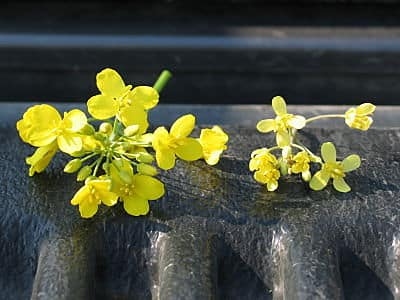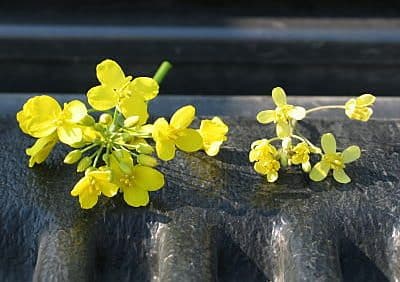
Canola has a high demand for sulphur. Because of high sulphur variability across most fields, the common recommendation is to apply 10-15 lb./ac. of sulphur when soil test results show adequate levels and 20-25 lb./ac., or more, when tests show deficient levels.
Product options
Ammonium sulphate. This is readily available for crop uptake and is the best source for spring applications. Ammonium sulphate is generally applied in a band or broadcast, and is not recommended to be placed with the seed. Ammonium sulphate can be applied in the spring or fall, and requires little or no incorporation.
Elemental sulphur. This is best applied in the fall, and even then, may not become plant available the following spring. When applied in the spring, elemental sulphur often does not oxidize at levels high enough to meet crop needs throughout the growing season. Elemental sulphur applied well in advance of the crop demand has more time to oxidize and more will be available when the crop needs it. Based on price and logistics, growers may prefer a sulphur program based on elemental sulphur applied in the fall and in seasons ahead of growing high S demanding crops like canola. This can be a long-term solution when done on a regular basis at rates sufficient to meet crop needs. Growers will want to monitor crops during the season. If sulphur deficiency is detected, an in-crop top dress of ammonium sulphate may be required. Read more.
S15. This product includes ammonium phosphate as well as ammonium sulphate and elemental sulphur. Half of the sulphur is elemental, which will not all be available in the year of application — depending on environmental conditions. Adjust rates accordingly.
Rapid release elemental sulphur (RRES). These are an improvement over other elemental sulphur products, but still do not match yields from an equivalent amount of S applied as sulphate.
For more on these recommendations and the science behind them, please read the article “Canola needs sulphur fertilizer” on page 18 of the Canola Digest Science Edition 2014.
For more detail on these and other product choices, see the Canola Encyclopedia.

